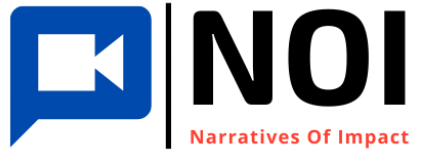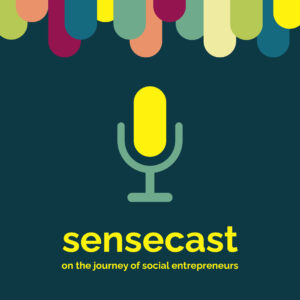Digital storytelling methodologies to measure impact
In the last article of the NOI Toolkit, we talked about how to approach efficiently storytelling, referring to the why, who and what.
But still, how digital storytelling can measure impact? There may be infinite possibilities of measuring impact with storytelling, some of which were mentioned in the NOI Toolkit, so here are a few methods such as Reflective Interviews, Sensecast and #FighterSpirit that we think are interesting and effective, and that need particular attention.
Reflective interviews
Reflective interviewing involves a continuous process of reflection. Reflexivity consists in examining oneself both as the researcher and the research. Self-searching means examining one’s conceptual baggage, assumptions and preconceptions, and how these affect research decisions, the selection and wording of questions.
Reflective interviewers seek to understand the meaning, but they do not assume that meanings are fixed and stable. They do not expect that the “truth” is “out there” waiting to be discovered by asking the right questions. They do not assume that their questions are “objective,” nor assume that their answers have straightforward, definitive meanings that mirror a singular “reality.” Instead, they hold that all meanings are interactively and culturally constructed.
Individual social actors are located within social settings structured by gender, class, race, age and other ascriptive characteristics. Social actors’ multiple, shifting social locations shape the construction of meaning within any particular context.
Reflective interviewers are interested in how meanings are produced and reproduced within particular social, cultural and relational contexts. They recognize the interview itself as one such context of interactive meaning-making. Therefore, interpreting the answers requires reflection on the entire research context.
Reflexivity involves making the research process itself a focus of inquiry, laying open pre-conceptions and becoming aware of situational dynamics in which the interviewer is also the respondent and is jointly involved in knowledge production. Findings do not emerge only at the last stage of the research, but there is a deepening of insight throughout the research process. Reflexive practices provide the opportunity for revising questions and even re-framing the research topic as the project unfolds.
Reflective interviewing involves a continuous process of reflection. Reflexivity consists in examining oneself both as the researcher and the research. Self-searching means examining one’s conceptual baggage, assumptions and preconceptions, and how these affect research decisions, the selection and wording of questions.
SenseCast
Slightly different is SenseCast, a project initiated and run by MakeSense Berlin community members. It was born to showcase and inspire social entrepreneurship and the people behind it. Guest speakers are social entrepreneurs who share insights from their journey of making an impact, empowering others to do the same. Once per month, the SenseCast team interview one social entrepreneur who will talk about their personal and professional journey.
They share insights and learning points from their journey of making an impact. By doing so, the podcast team hopes to empower others to do the same. Starting a social business is not an easy path. It’s a road full of challenges, both operational and emotional. Which idea to choose? When to launch? How to build up and maintain your business? Dealing with all that can be intimidating. Showing people, through storytelling, that other social entrepreneurs have faced many challenges creates an impact on aspiring ones. By sharing stories from the journey of social entrepreneurs, the team hopes to inspire people to take the leap and build social businesses with passion and motivation.
#FighterSpirit
And finally, #FighterSpirit. Vensenya is a social enterprise that helps TV win Gen Z & Gen Y by co-creating series that resonate with their real lives dilemmas. Vensenya created #FighterSpirit, a streaming series composed of 12 episodes (8 minutes per episode).
The series involves underprivileged adolescents from urban low-income communities, to create resonance in the young audiences through their stories. To measure impact, #FighterSpirit used entertainment education and audience-driven story design.
The main goal of the TV series is to expose and inspire the target audience to a ‘growth mindset’. The project implements all the stages of film production and makes use of:
• entertainment education;
• target profiling and focus group interviews with the target audience and experts;
• co-creative workshops with the target audience, actors and creators.
The Most Significant Change model
Moreover, we want to mention a model called The Most Significant Change that we think could be an effective method when using storytelling. The Most Significant Change approach involves generating and analyzing personal accounts of change and deciding which of these accounts is the most significant – and why. There are three basic steps in using Most Significant Change:
1. Deciding the types of stories that should be collected;
2. Collecting the stories and determining which stories are the most significant;
3. Sharing the stories and discussion of values with stakeholders and contributors so that learning happens about what is valued;
Most Significant Change is not just about collecting and reporting stories but about having processes to learn from these stories – in particular, about the similarities and differences in what different groups and individuals value. It provides some information about the impact and unintended impact but is primarily about clarifying the values held by different stakeholders. By itself, it is not sufficient for impact evaluation as it does not provide information about the usual experience but about the extremes.
If you imagine a normal distribution of outcomes for individuals then the stories often come from the extremity of positive change. It can be useful to explicitly add a process to generate and collect stories from the extremity of little or negative change. The Most Significant Change approach can be very helpful in explaining how change comes about (processes and causal mechanism) and when (in what situations and contexts). It can therefore be useful to support the development of programmed theory (theory of change, logic models).
When should we choose this approach? It’s particularly useful when you need different stakeholders to understand the different values that other stakeholders have in terms of “what success looks like” – criteria and standards for outcomes, processes and the distribution of costs and benefits. Also, it works best in combination with other options for gathering, analyzing and reporting data. It doesn’t provide comprehensive information about the impacts produced by an intervention.
If you want to understand more about how stories’ impact can be measured, read the Toolkit.


